#Caulophyllum giganteum
Photo

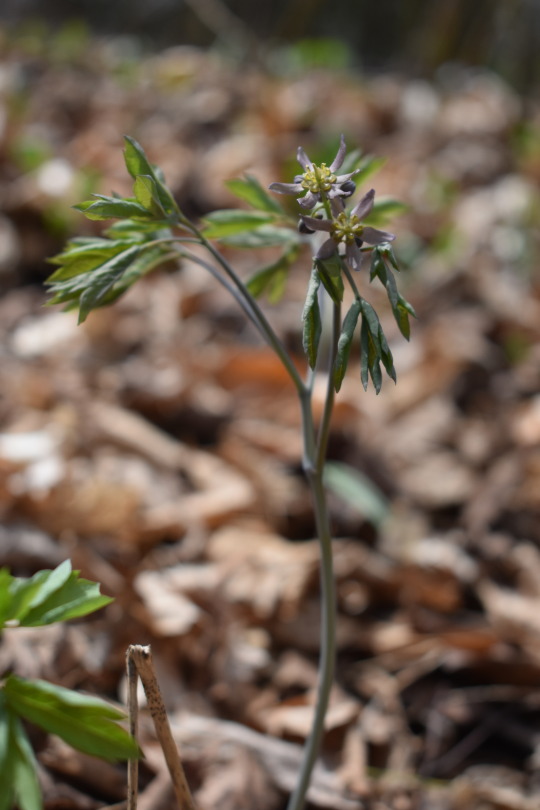
Early Blue Cohosh
Caulophyllum giganteum
Berberidaceae
Photographs taken on April 15, 2023, at Starkey Hill, Ontario, Canada.
#wildflowers of southern ontario#blue#purple#Early Blue Cohosh#cohosh#Caulophyllum giganteum#Caulophyllum#Berberidaceae#Starkey Hill#Ontario#Canada#wildflowers#wildflower#flora
20 notes
·
View notes
Photo

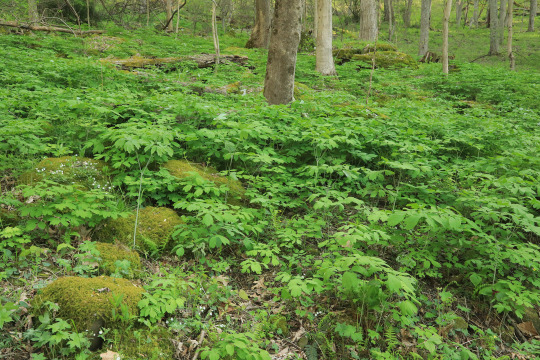
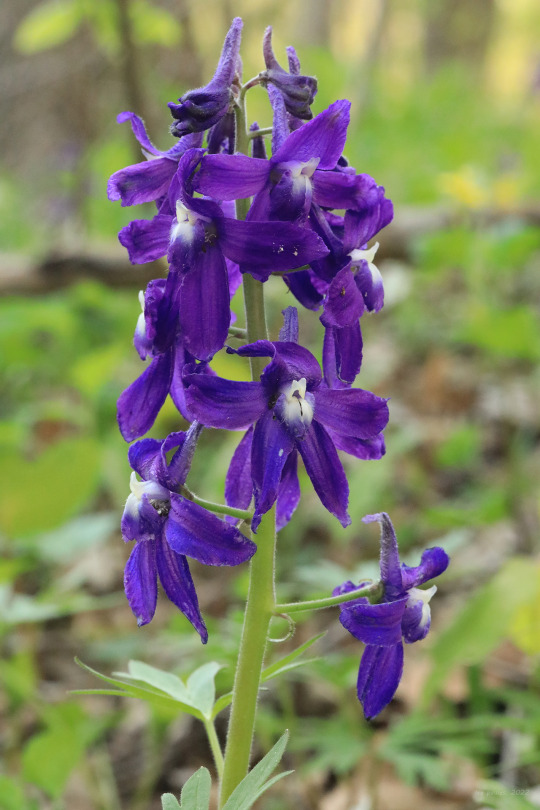
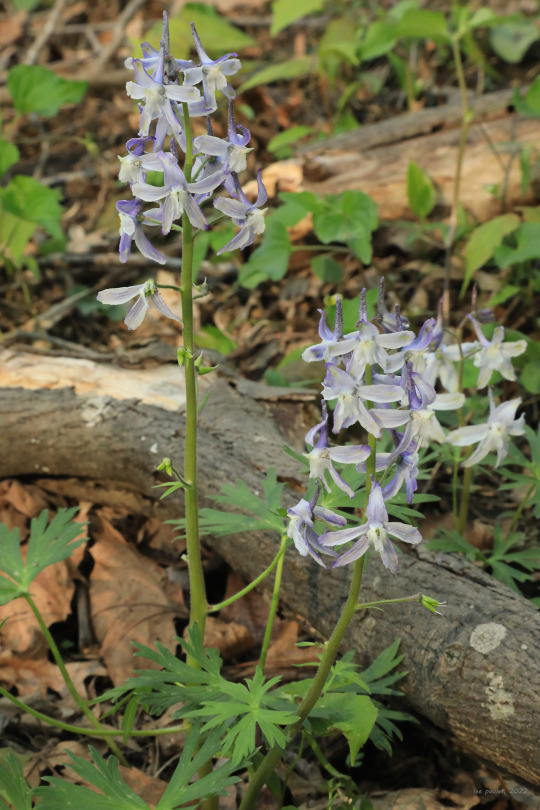
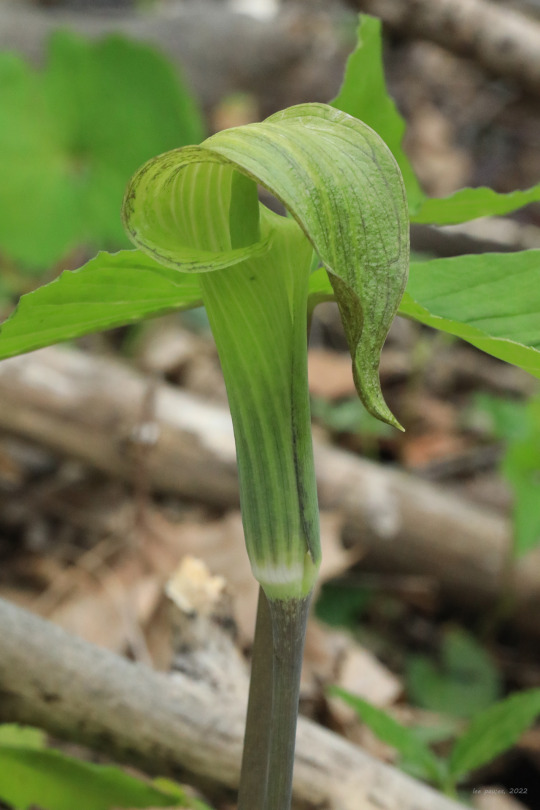

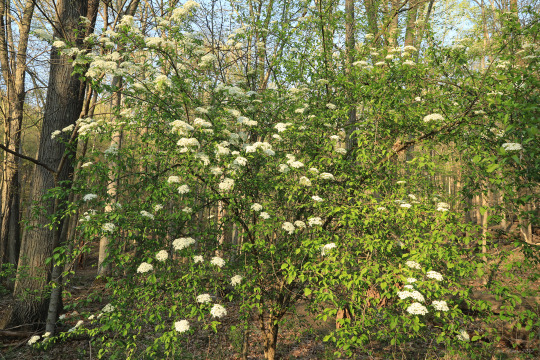
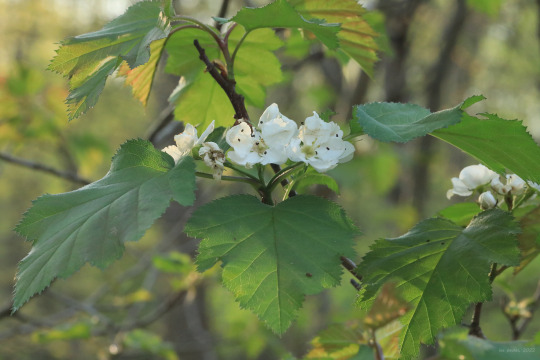
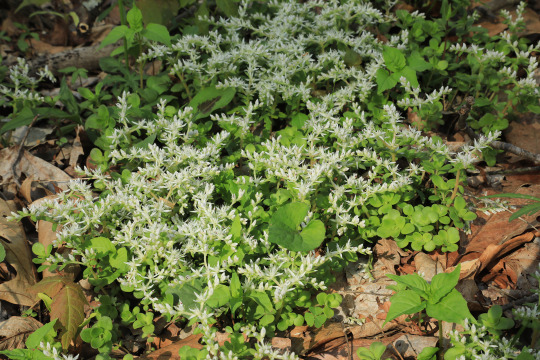
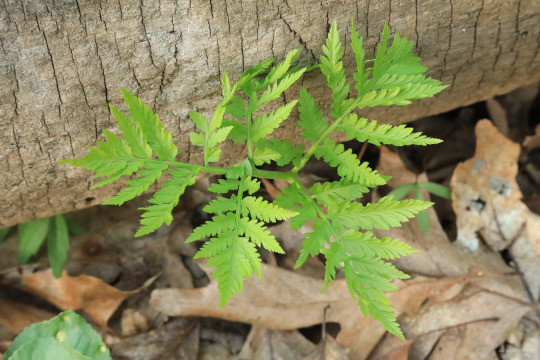
Elizabeth’s Woods, part of the Toms Run Preserve system, is located just a few minutes from where I work: a convenient little Eden on whose gentle, winding trails I frequently relieve my accumulated angst and stress. In early spring, especially in the late afternoon, the old woods take on a soft, burnished glow that penetrates every leaf and flower, exposing nature’s finest filigree - veins, venules, stigmas, anthers and more - in intricate detail.
From top: a rocky alcove overrun by giant blue cohosh (Caulophyllum giganteum); a purple variation of dwarf larkspur (Delphinium tricorne), a toxic little beauty whose flowers remind me of parachuting wizards; an even lovelier lavender and white variation of the same plant; a tall and stately Jack-in-the pulpit (Arisaema triphyllum); a smooth blackhaw viburnum (Viburnum prunifolium), equally beautiful in spring and fall, when its foliage turns reddish-purple; bigfruit hawthorn (Crataegus macrosperma) with new spring blossoms; woodland stonecrop (Sedum ternatum), whose massed white flowers look like clumps of snow in the leaf litter; and an unfurling Virginia grape fern (Botrypus virginianus), also known as rattlesnake fern due to its tendency to grow in the same habitats in which rattlesnakes occur.
#appalachia#vandalia#west virginia#spring#flora#wildflowers#caulophyllum giganteum#giant blue cohosh#delphinium tricorne#dwarf larkspur#arisaema triphyllum#jack-in-the-pulpit#viburnum prunifolium#blackhaw viburnum#smooth blackhaw viburnum#crataegus macrosperma#bigfruit hawthorn#sedum ternatum#woodland stonecrop#botrypus virginianus#virginia grape fern#rattlesnake fern#elizabeth's woods#toms run preserve#west virginia land trust
145 notes
·
View notes
Text
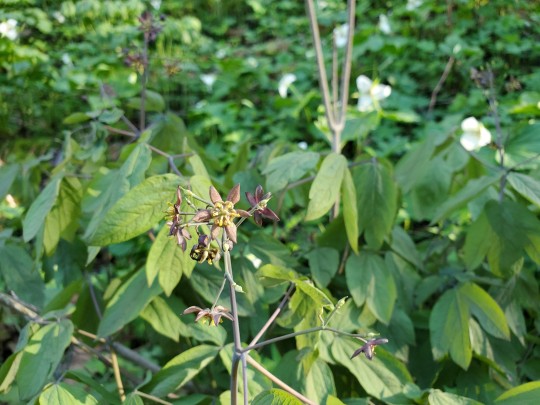
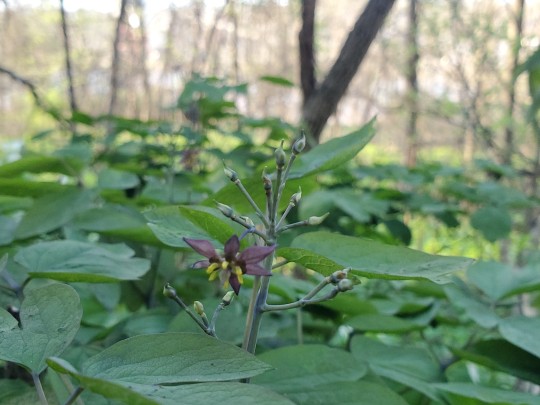
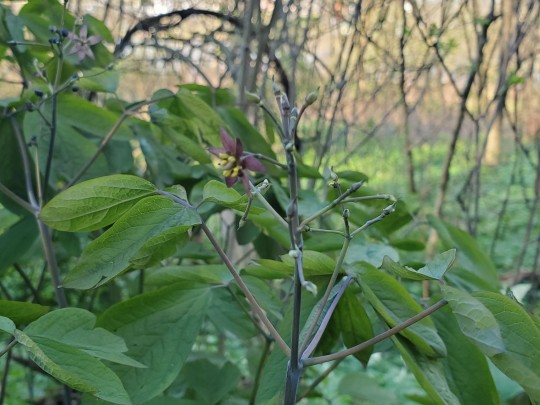

Caulophyllum species, probably C. giganteum at Barking Slopes Conservetion Area in New Kensington, PA
The flowers on this one were so intricate and the leaves very interesting
26 notes
·
View notes
Text

The garden's Early Blue Cohosh (Caulophyllum giganteum) is popping purple~
#my post#my gardens#my plants#plantblr#gardeners on tumblr#gardeners of tumblr#flowers#spring#blue cohosh#Caulophyllum giganteum#woodland garden
13 notes
·
View notes
Photo
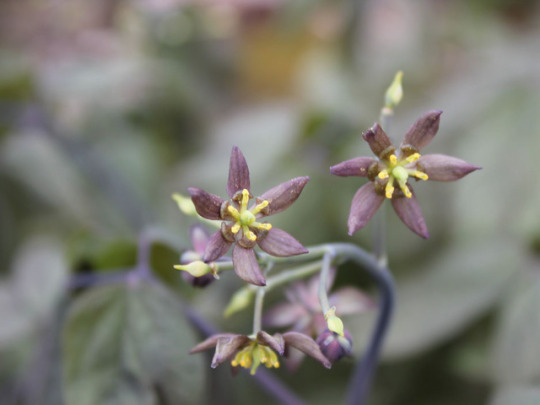

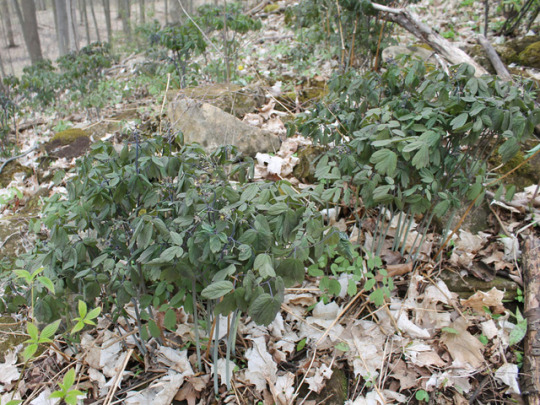
Giant Blue Cohosh
Giant Blue Cohosh is a species of flowering plant in the barberry family. It is native primarily to northeastern North America, where it is found in moist rich forests. Giant Blue Cohosh is known for its large triple-compound leaf, and large blue, berry-like fruits. Unlike many spring wildflowers, it is not an ephemeral plant and persists throughout much of the summer. Caulophyllum Giganteum ranges from Ontario and Quebec east to Vermont and south through Tennessee and North Carolina and is not particularly common anywhere in its range.
*************************************************************************
Giant Blue Cohosh Article Found -Here-
*************************************************************************
Help support the continued efforts of MIROFOSS to provide advertisement and bias free research by donating to mirofoss or buying some of our photos for your own personal use. All proceeds from photo sales will go towards the MIROFOSS Foundation.
#Giant Blue Cohosh#Cohosh#Flower#Violet#Barberry#Caulophyllum Giganteum#Plant#Science#Nature#Earth#biology#Forest#Bloom#Micro#Macro#MIROFOSS
0 notes
Photo

Blue cohosh. It starts out sinister-looking, but turns into a mild-mannered Clark Kent. Maroon flower typifies Caulophyllum giganteum. #InTheGardenToday #bloomingtoday #coldclimategardening #upstateny #flowerstagram #instaflower #nativeplants #secretgarden https://www.instagram.com/p/B_lrM97A4qn/?igshid=8xlx9qj5ei36
#inthegardentoday#bloomingtoday#coldclimategardening#upstateny#flowerstagram#instaflower#nativeplants#secretgarden
0 notes
Photo


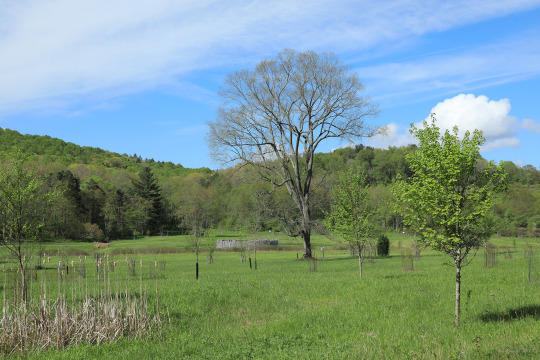

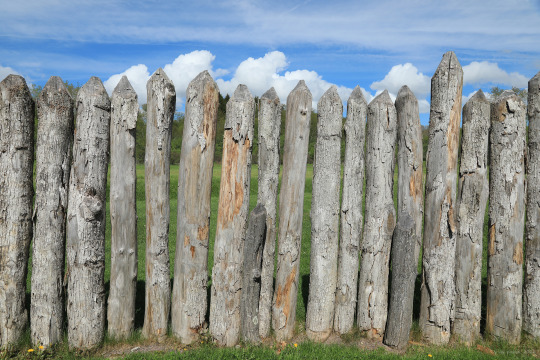



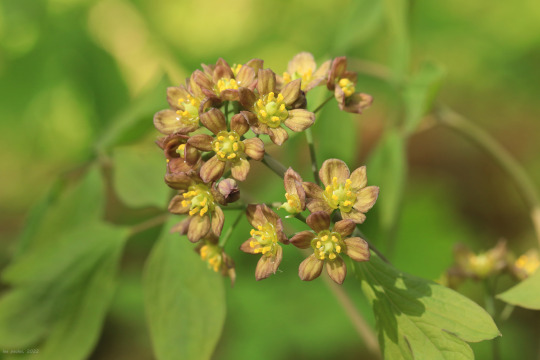

Icons of the National Road, Part 5. Fort Necessity National Battlefield commemorates the site of one of the earliest battles of the French and Indian War. Shortly after ambushing a French expedition led by Joseph Coulon de Villiers, Sieur de Jumonville at a nearby mountain glen, Colonel George Washington ordered his Colonial militia to construct a “fort” - little more than a stockade surrounded by breastworks - at Great Meadows in anticipation of an attack by the French. Sure enough, on July 3, 1754, Jumonville’s older brother, Louis Coulon de Villiers, led a French and Native American force in an assault on the fort, which was defended by the Colonial militia and small number of British regulars under Washington's command. After a day-long battle in the rain, Washington was compelled to surrender and sign a confession admitting to Jumonville’s assassination. It was the first and last time in his career he would surrender to the enemy.
In addition to a reconstruction of the fort and its earthworks, the park includes a visitor center with a museum, the Mount Washington Tavern, General Edward Braddock’s gravesite, and Jumonville Glen.
#appalachia#vandalia#pennsylvania#the national road#us route 40#laurel highlands#allegheny mountains#human history#historical sites#battlefield#fort necessity national battlefield#french and indian war#george washington#mount washington tavern#caulophyllum giganteum#giant blue cohosh#houstonia caerulea#azure bluets
12 notes
·
View notes
Photo
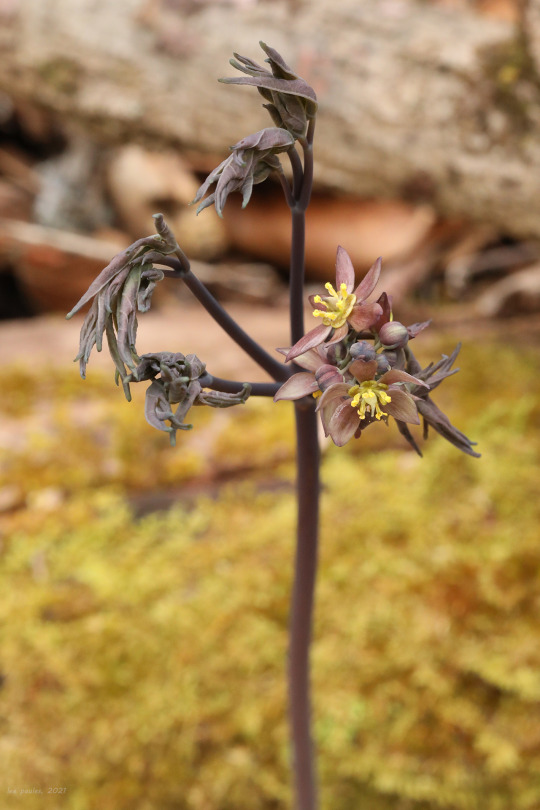
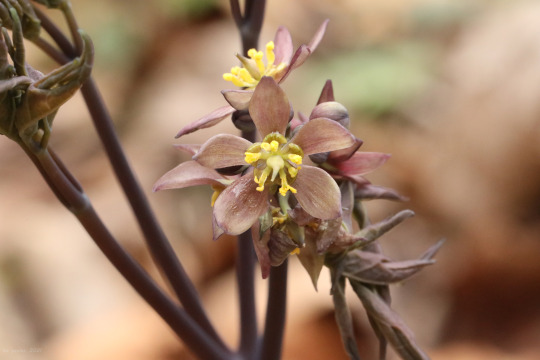

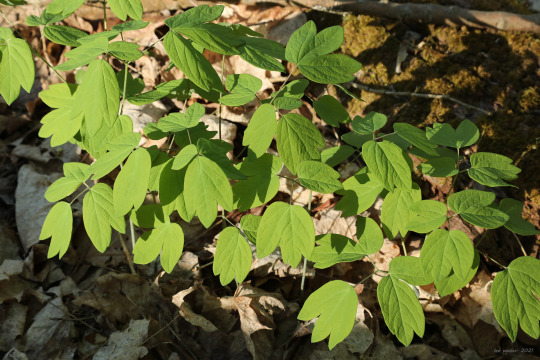
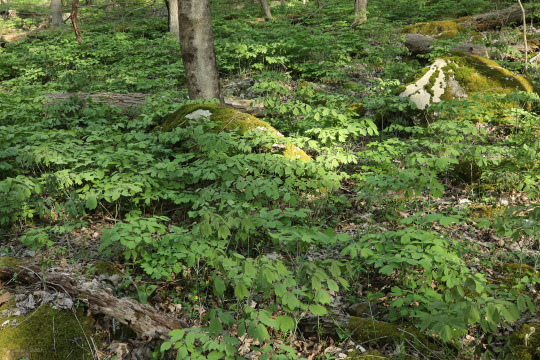
Giant blue cohosh (Caulophyllum giganteum) arguably makes the most dramatically-balletic entrance of all of Appalachia’s spring-blooming perennials. The plant’s delicate maroon shoots emerge en masse from the drab leaf litter in early April and soon produce the most extraordinary, parasol-like flowers, each with six enlarged sepals, six smaller petals, and six large, yellow stamens surrounding a bulbous pistil. The flowers are later replaced by clusters of smoky blue berries. As this shade-loving member of the barberry (Berberidaceae) family matures, its stems and foliage turn to a soft, reflective shade of green and take on a shrubby appearance. The plant’s thrice-compound, three-lobed leaves are reminiscent of those of meadow rue but the two plants are not closely related. Giant blue cohosh, also known as early blue cohosh, blooms earlier than the more familiar blue cohosh (Caulophyllum thalictroides), which has yellow-green flowers. Photos above were taken at Coopers Rock State Forest and Elizabeth’s Woods at Toms Run Preserve.
#appalachia#vandalia#west virginia#spring#flora#perennial#wildflowers#caulophyllum#blue cohosh#giant blue cohosh#early blue cohosh#coopers rock state forest#toms run preserve#elizabeth's woods
38 notes
·
View notes
Photo

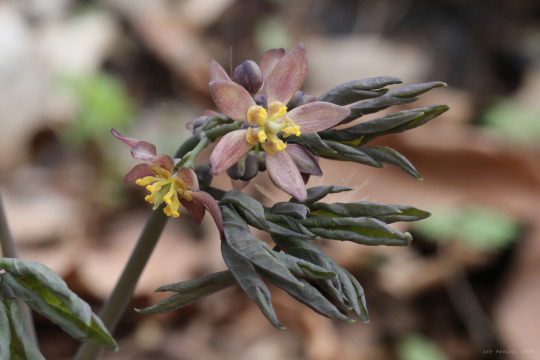
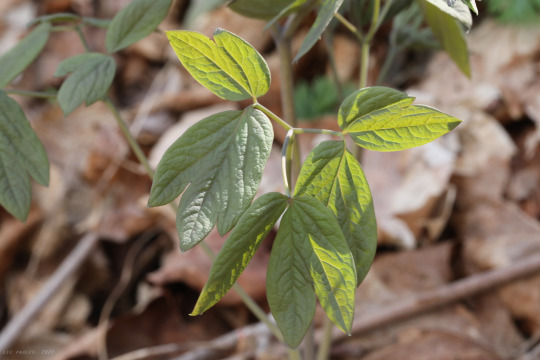

. . . the even more stunning and languorous giant blue cohosh (Caulophyllum giganteum), one of the earliest blooming wildflowers in Appalachia’s woods. This species is primarily distinguished from thalictroides by its reddish-purple, rather than green or yellow, flowers, a fewer number of flowers overall, and larger sub-leaflets. The mature leaves of both species are roughly the same size, however. Although the seeds of their berries were once used as a coffee substitute, the berries, leaves, and roots of both species of Caulophyllum are mildly toxic if ingested. The photos above were taken on the Mon River Trail this morning.
#appalachia#vandalia#west virginia#flora#wildflowers#spring#perennial#caulophyllum#giant blue cohosh#berberidaceae#mon river trail
73 notes
·
View notes
Video
Purple-flowered Blue Cohosh (Caulophyllum giganteum) by Jason King
0 notes

